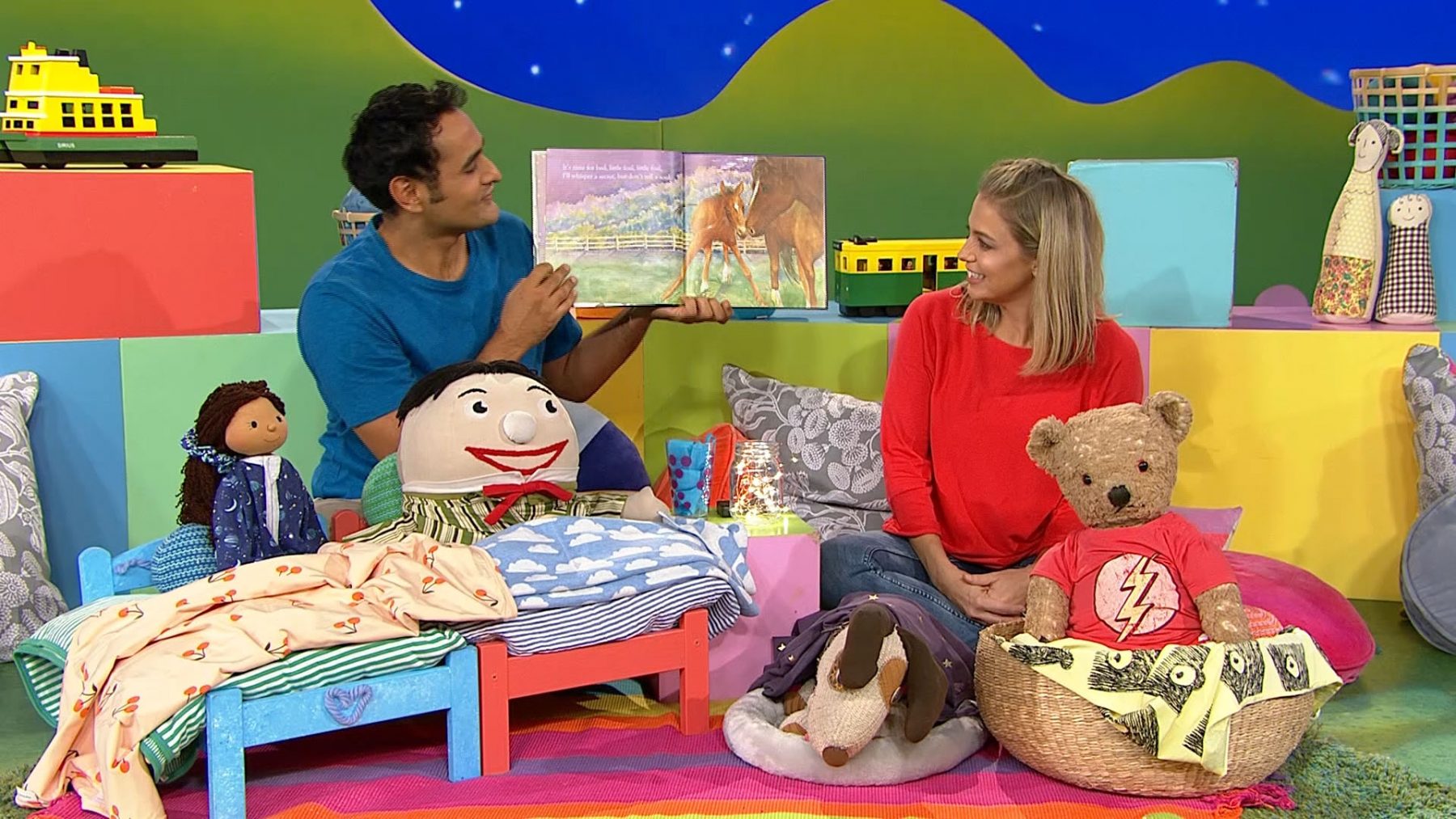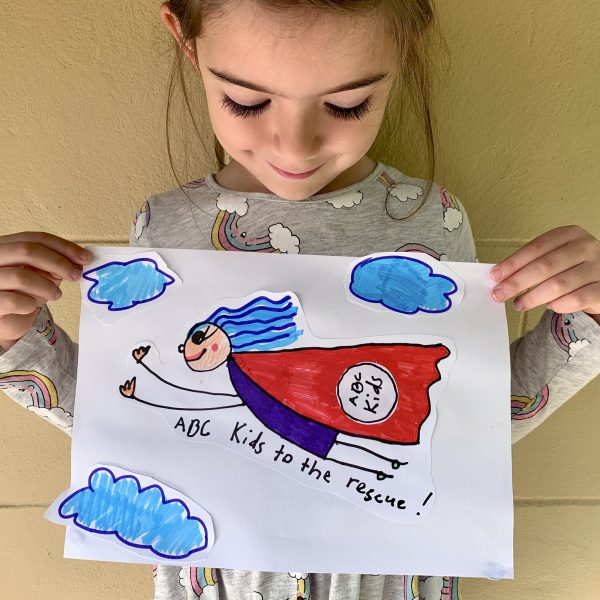Researchers explore communication via screen through perennial favourite Play School

ABC Early Childhood Education Producer Laura Stone recently spoke with Macquarie University’s Dr Elizabeth Austin about research that she and her colleagues are conducting in relation to how the words and gestures of Play School presenters combine to convey meaning.
A summary of the key points of their conversation is presented below, with the full text available here.
Now in its 55th year, Play School has always reflected big ideas in early learning through the wonder of play. Whether it’s painting in time with the unmistakable live piano or dancing with scarves and silly hats, each episode demonstrates a deep understanding of how children connect with the world and how they make meaning from each experience.
The camera lens and TV screen are no barrier to the presenters’ engaging eye contact and warm conversational tone, but there are many more subtle layers to enhance the overall quality of each viewing opportunity, Ms Stone explained.
One of these layers relates to how presenters use their bodies, and specifically their gestures, to optimise learning and engagement for children, and it is this layer which has captured the attention of Dr Austin and the team working with her.
Their findings, titled Gesturing for the TV audience: Play School presenter communication of information will help provide recommendations on how children’s television shows might use speech and gesture to better support audience learning and engagement.
Dr Austin is an early career researcher specialising in non-verbal communication and its implications for learning and systems.
“I’m passionate about improving how we interact with others in the environment,” she told Ms Stone.
“I use my knowledge of research design and methodology to explore the role our hand gestures play in memory and learning. My goal is to identify ways of improving how we communicate with one another.”
Joining Dr Austin in her research are fellow Macquarie University academic Associate Professor Naomi Sweller, and Dr Nicole Dargue of Griffith University.
Each of the researchers, Dr Austin explained, were drawn to the space with the ultimate goal of helping designers of multimedia content to best facilitate children’s language development through a combination of verbal and non-verbal communication strategies.
“The more words children are exposed to early in life, the better their language development,” Dr Austin explained, “but children do not experience language solely from their face-to-face caregivers. Multimedia learning tools, including television, are increasingly important from a very young age.”
Despite this importance, television programs vary in how much language they convey. By age three, differences in language development can have a profound impact on children’s future academic outcomes.
“Our research shows that it is not just verbal language which affects children’s learning: exposure to both words and gestures can help young children learn,” Dr Austin shared.
The team was drawn to studying Play School because of the role it plays in educating and enriching childhood learning through music, movement, active participation, and story sharing.
“Play School themes are developed to enhance pre-schoolers’ understanding of the environment in which they engage. For example, in 2018 the Play School series titled ‘Gadgets and Gizmos’ showed pre-schoolers how to code a robot and create a simple tablet animation to tell a story,” Dr Austin said.
“We know from past research that program content and how it is conveyed is important in shaping the development of language. For example, the broad vocabulary and use of language in television programs by presenters results in an increase in the ability of children to express themselves verbally. The content of children’s programs and how it is portrayed therefore plays a crucial role in child development.”
Research has also shown that the combined use of words and gestures when talking with young children both increases the quality of interactions and predicts key academic skills, such as storytelling, as children grow older. For example, using gestures when talking to young children about their environment and activities has been shown to boost children’s understanding.
Gestures help young children process and remember the spoken message by providing additional information about the content or by providing the same information in a visual, rather than verbal, way.
Gestures can enrich conversations and enhance the learning environment. Given the increasingly important role of multimedia learning tools in childhood learning, Dr Austin said, it is important to examine how information is conveyed by human presenters, including the gestures they produce, as the gestures themselves have the potential to enhance learning outcomes – a key aim of Play School.
Dr Austin hopes that the findings of the study will benefit early childhood teachers, educators and parents/carers, saying they represent the first step in understanding the role of gesture in children’s learning from television programs.
“We hope to complete follow-up studies exploring whether these gestures do help children learn, as well as why,” she said
“If gestures do benefit learning through television shows as anticipated, important practical implications of the findings are suggested. For example, our research could provide producers and presenters with direction around when and how gestures benefit childhood learning most through television shows, so that gestures can be used by presenters in a way that is most likely to foster childhood learning.”
For those working with children under eight years of age, or for those who are parenting children in that age group, understanding how gestures support understanding and memory could help to modify program delivery.
Dr Austin gave the example of a preschool teacher’s voice being muffled by a noisy playground environment, children may still be able to understand the intended message by processing the teacher’s gestures.
“Similarly, she added, if a child forgets part of a task instruction (e.g., put the toys away), they might still recall the hand gesture that accompanied the verbal instruction, and use that to complete the task. Children use the environment to help them think and process information and gestures help children bridge the gap between words and the world they live in.”
Popular

Practice
Provider
Quality
Research
Workforce
New activity booklet supports everyday conversations to keep children safe
2025-07-10 09:00:16
by Fiona Alston

Quality
Practice
Provider
Research
Workforce
Honouring the quiet magic of early childhood
2025-07-11 09:15:00
by Fiona Alston

Quality
Practice
Provider
Workforce
Reclaiming Joy: Why connection, curiosity and care still matter in early childhood education
2025-07-09 10:00:07
by Fiona Alston












